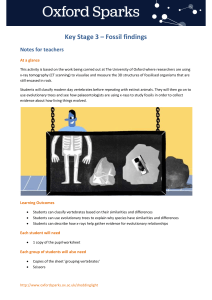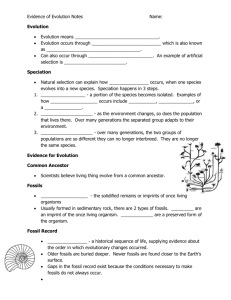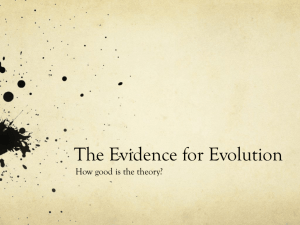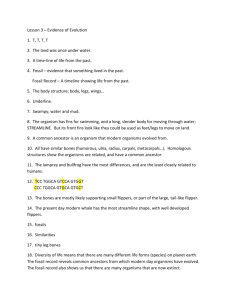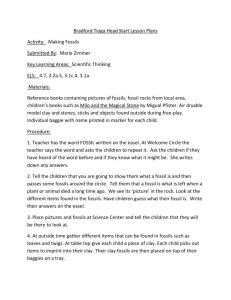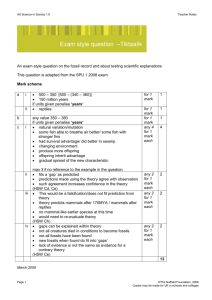KS3_Fossil_findings_Pupil_Sheets
advertisement
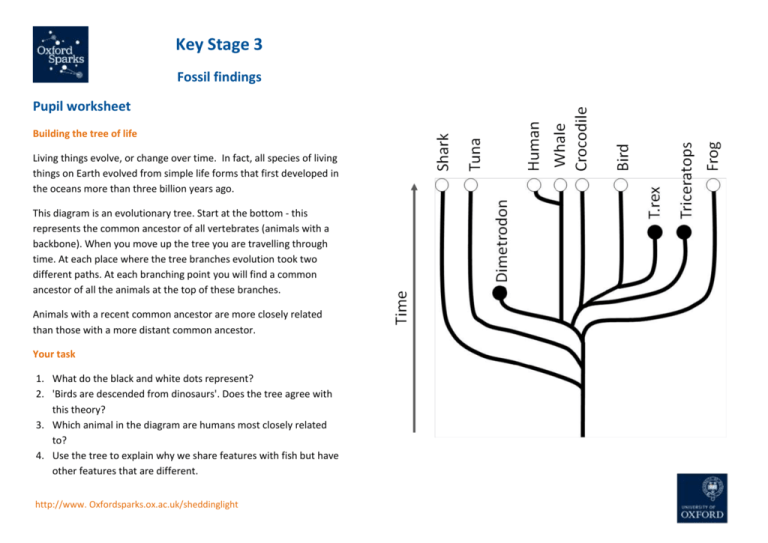
Key Stage 3 Fossil findings Pupil worksheet Building the tree of life Living things evolve, or change over time. In fact, all species of living things on Earth evolved from simple life forms that first developed in the oceans more than three billion years ago. This diagram is an evolutionary tree. Start at the bottom - this represents the common ancestor of all vertebrates (animals with a backbone). When you move up the tree you are travelling through time. At each place where the tree branches evolution took two different paths. At each branching point you will find a common ancestor of all the animals at the top of these branches. Animals with a recent common ancestor are more closely related than those with a more distant common ancestor. Your task 1. What do the black and white dots represent? 2. 'Birds are descended from dinosaurs'. Does the tree agree with this theory? 3. Which animal in the diagram are humans most closely related to? 4. Use the tree to explain why we share features with fish but have other features that are different. http://www. Oxfordsparks.ox.ac.uk/sheddinglight Key Stage 3 These problems can be helped by using x-rays. Fossil findings Pupil worksheet How do fossils help to build trees? Fossils are the remains of living things. Palaeontologists are scientists who study fossils. They spot features that they have in common with modern-day organisms. This helps us to build up evolutionary trees and work out how living things have evolved. Palaeontologists at The University of Oxford are using x-rays to build 3D models of the space inside the skulls of ancient fish. The model can even be printed using a 3D printer! This is helping them to work out how eyes in early vertebrates evolved. But: The best fossils are formed from hard substances like bone. This makes it difficult to study soft animals like jellyfish, or organs like the brain. Fossils are usually found buried deep in layers of rock. This makes it difficult to find them! If we do find a fossil it can be difficult to remove it from the rock to study it without causing damage. 2 mm Fossil of an ancient fish Model of the inside of its skull Your task Outline how x-rays are used to study evolution. http://www. Oxfordsparks.ox.ac.uk/sheddinglight
